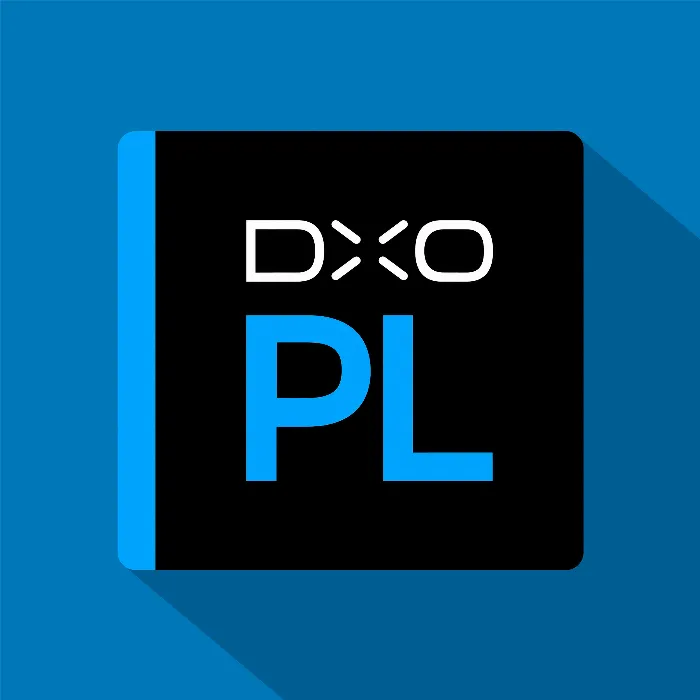Adjusting the program settings of DxO PhotoLab 3 can significantly help you work more efficiently and individually with your images. The presets allow you to tailor the software according to your personal preferences and workflows. In this guide, I will walk you through the various options step by step so that you can make optimal use of the filters and editing functions.
Key Insights
- The presets can be divided into three main areas: General, View, and Performance.
- Adjustments for RAW and JPEG files can be set and saved individually.
- Personal preferences, such as color management and user interface, can be adjusted through the program and view settings.
Step-by-Step Guide
To open the program settings, navigate to "Edit" in the menu bar and select "Program Settings." This will open a dialog box divided into three tabs: General, View, and Performance.
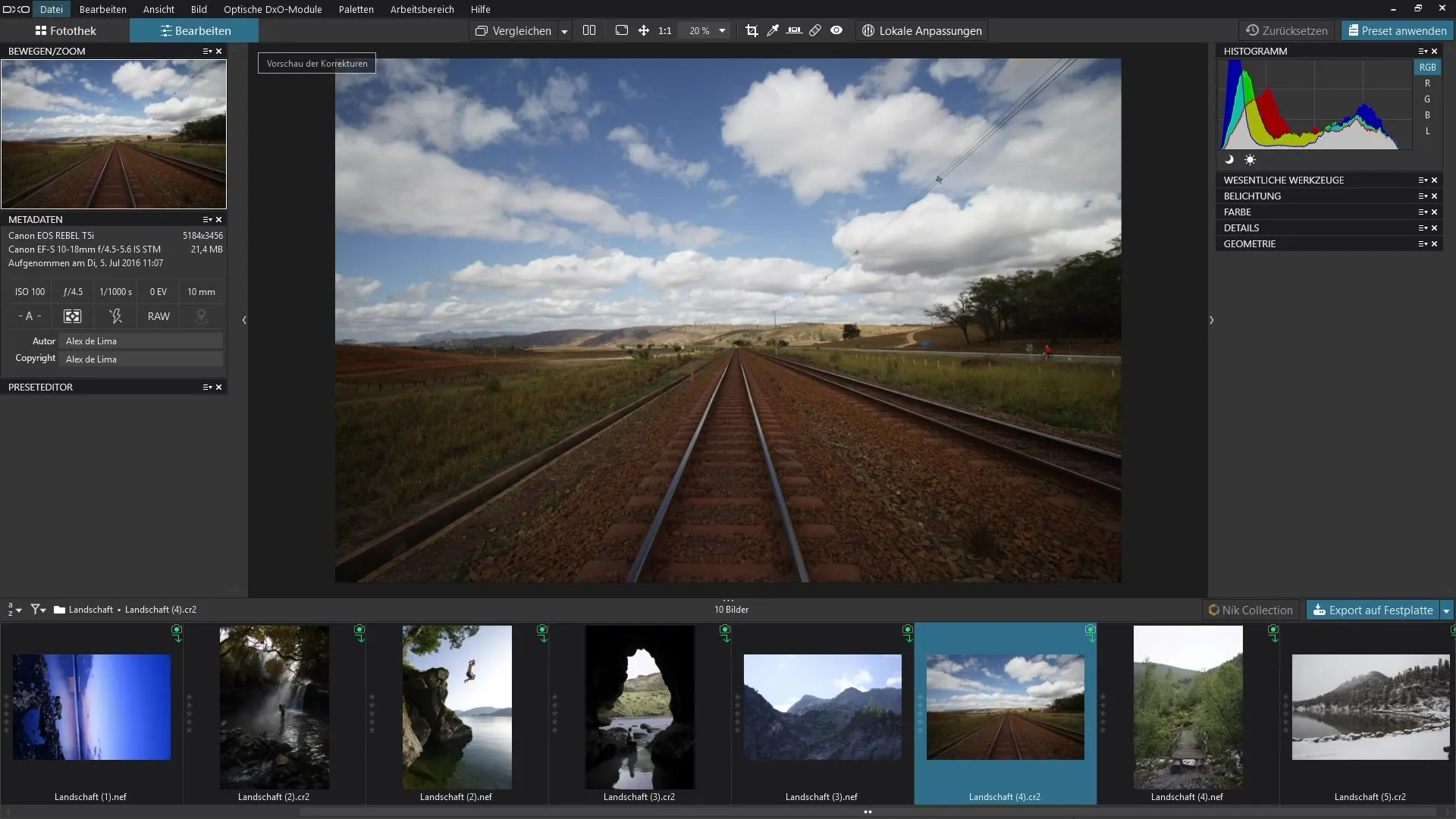
General Settings
In the General tab, you can set the language of the program. If you have downloaded the German version, it is set to German by default. With a simple click, you can also switch to other languages. There is also the option to participate in an anonymous program for product improvement. This option is asked during installation.
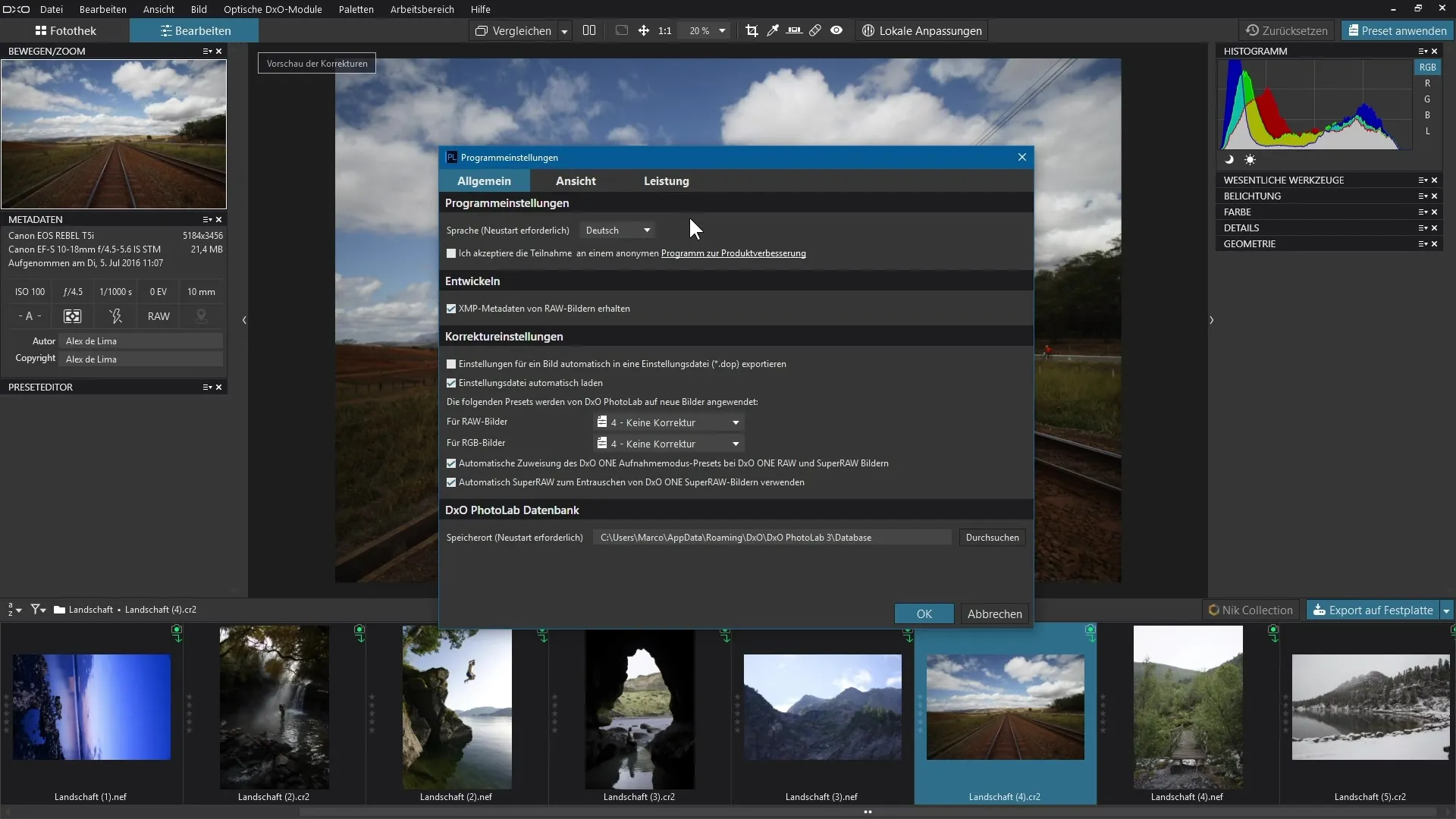
Another important detail in the general settings is the option to retain existing XMP metadata when developing RAW files. This means that if you want to edit a RAW file that already has an XMP metadata file, this data will be retained. By default, this option is checked.
Additionally, in the correction settings, you can specify whether changes for an image should be automatically exported to a settings file. This is especially useful if the program crashes or if you want to save your changes in a separate file.
View Options
Switch to the View tab to choose the color profile for your monitor. This profile is important if you work with calibrated monitors. You can select the appropriate profile to ensure that your colors are displayed accurately and precisely.
Another point in the view settings is the adjustment of the window background. Adjusting the brightness of the background can be helpful for improving the visibility of the image editing tools.
You also have the option to adjust the size of the grid in the image editing area. By default, this is set to 50 pixels. You can adjust the size to create a finer or coarser grid.
Saving Custom Templates
If you regularly use the same editing workflow, it is advisable to save your own templates for RAW files. This way, you can automatically apply them to each new image you open. To save a template, go to the settings and select your preferred editing sequence.
Performance Options
In the performance settings, you have the option to adjust the maximum cache size. It is advisable to check this window regularly to optimize the location of the Photolab database, especially if you work with large amounts of data.
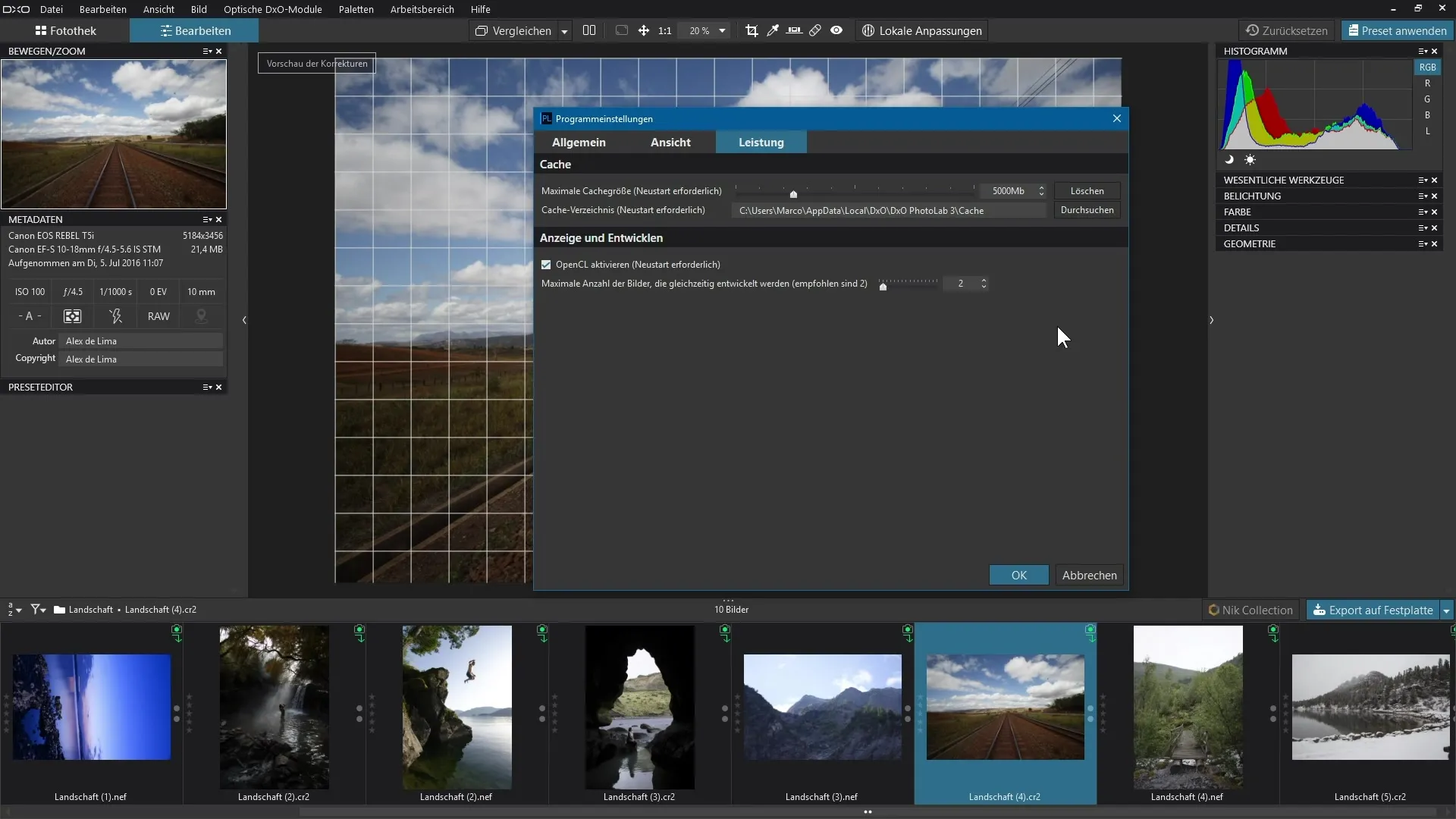
Furthermore, you can decide whether you want to use GPU acceleration. This means that you can use your graphics card for faster image processing. This option can significantly improve rendering and editing speed.
When you enable this feature, a benchmark is run to determine whether your processor or your graphics card is faster. Depending on the result, the faster device will be used to process your images.
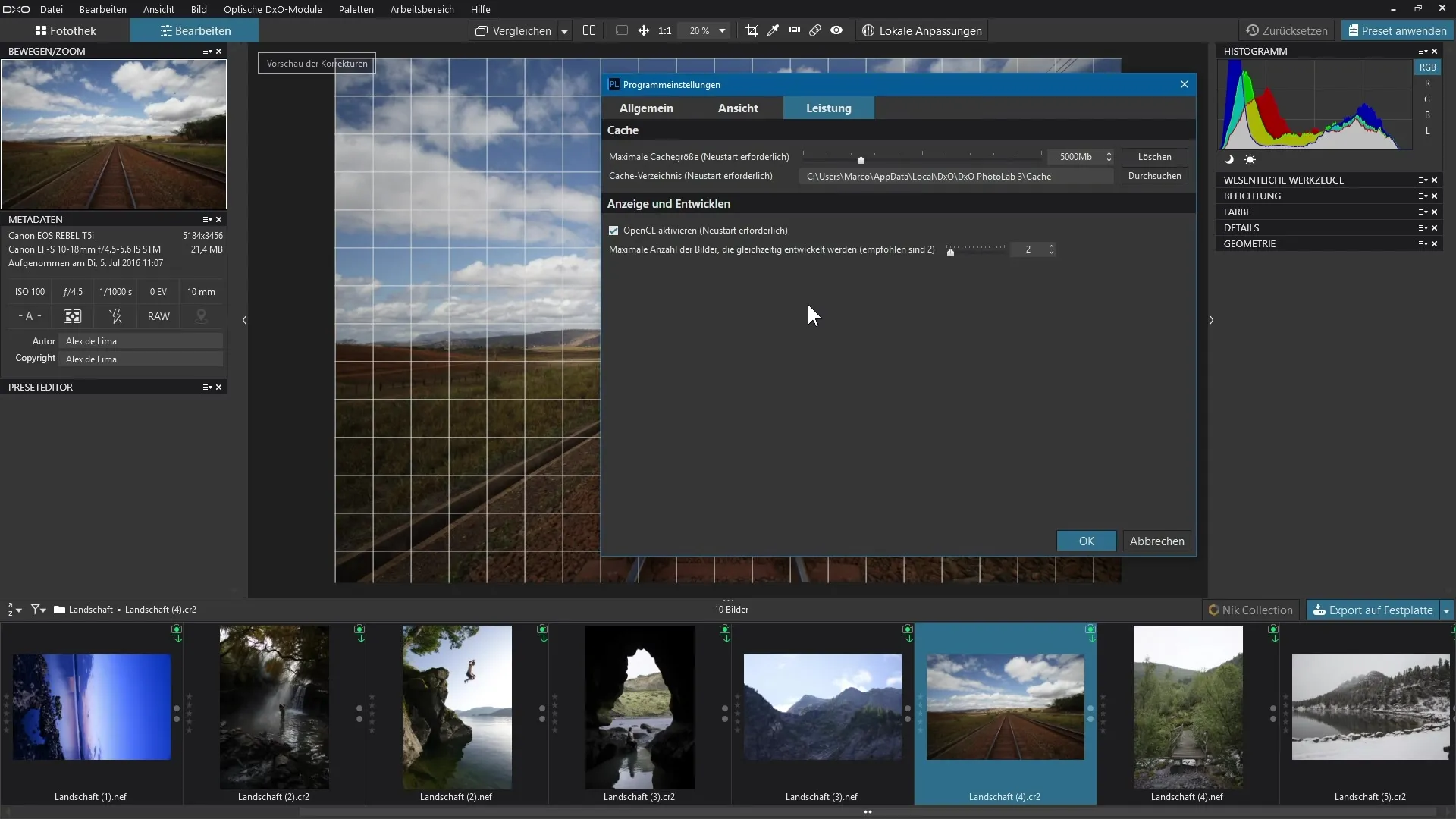
Summary – Maximizing Presets in DxO PhotoLab 3
In this guide, you have learned about the various options for presets in DxO PhotoLab 3. By adjusting the program settings to your personal workflow, you can optimize your editing time and maximize the software's performance.
Frequently Asked Questions
How do I change the language in DxO PhotoLab?Go to “Edit” > “Program Settings” > “General” and select your desired language.
What are XMP metadata and why are they important?XMP metadata contains information about your images that should be retained when editing RAW files.
Can I save my own templates in DxO PhotoLab?Yes, you can save your own templates to apply them automatically to new RAW images.
How can I adjust the background in DxO PhotoLab?Switch to “View” in the program settings and adjust the window background according to your wishes.
What does GPU acceleration do in DxO PhotoLab?GPU acceleration uses your graphics card to speed up image editing, increasing performance.
